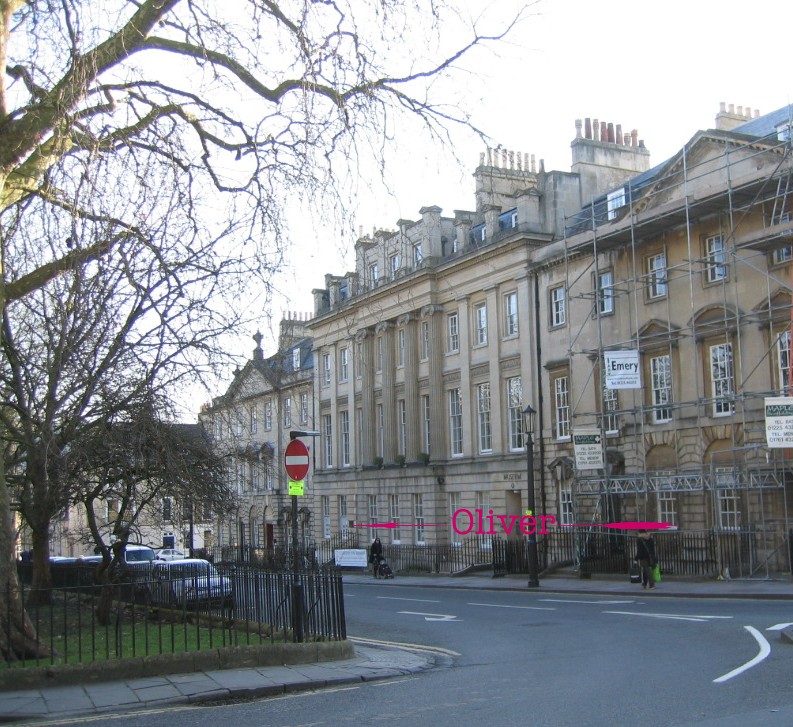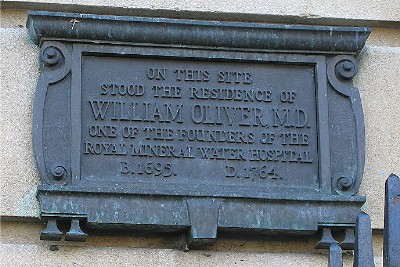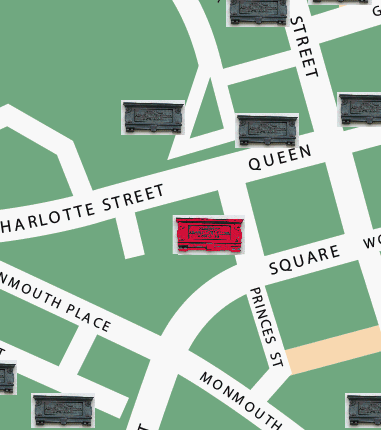Dr William Oliver
Who was he?
Wikipedia:
William Oliver (14 August [O.S. 4 August] 1695 – 17 March 1764) was an
English physician and philanthropist, and inventor of the Bath Oliver.
Oliver is said to have invented the Bath bun, however it proved too
fattening for his rheumatic patients, and so he invented the ‘Bath
Oliver’ biscuit.
Why was he in Bath?
He was born at Ludgvan, Cornwall and
after quliafication he practised for a time at Plymouth, where he
introduced inoculation for smallpox. In about 1725 he settled in Bath
and remained there for the rest of his life, obtaining in a very short
time the leading practice of the city. This was mainly due to his
friendship with
Ralph Allen (a fellow
Cornishman, who introduced him to
Pope, Warburton, and the rest of the guests at Prior Park), and with
Dr. William Borlase, his ‘friend and relation,’ who, after being his
patient in 1730, sent to him the gentry of the west country. Dr Oliver
was obe of the founders of the
Royal Mineral
Water Hospital.
When completed in 1734, the west side of Queen Square (below) consisted
of three separate houses, with Dr Oliver occupying the centre one*. In
1830 (long after his death) the house was demolished to be replaced by
the building that now bears the plaque:
 *"Another
misleading
plaque
purports
to record the residence of Dr. William
Oliver in the large house that originally formed the recessed centre of
Queen Square’s west side. This house was designed and built by the
elder Wood for Sir John Buckworth, who paid rates on it from 1736 to
1754. However, Dr. Oliver did pay rates in 1742 for the house now
numbered 19, and by 1754 he was rated for the three houses now numbered
18a, 19 and 20. In 1755 he leased the site for a new house, No. 17 Gay
Street." [Isom 1980]
*"Another
misleading
plaque
purports
to record the residence of Dr. William
Oliver in the large house that originally formed the recessed centre of
Queen Square’s west side. This house was designed and built by the
elder Wood for Sir John Buckworth, who paid rates on it from 1736 to
1754. However, Dr. Oliver did pay rates in 1742 for the house now
numbered 19, and by 1754 he was rated for the three houses now numbered
18a, 19 and 20. In 1755 he leased the site for a new house, No. 17 Gay
Street." [Isom 1980]

The text reads
"On this site stood the residence of
William Oliver M.D. one of the founders of the Royal Mineral Water
Hospital b. 1695 d. 1764"
Location map of 16-18
Queen Square:

(c) 2011
Bath-Heritage.co.uk | Contact us|


 *"Another
misleading
plaque
purports
to record the residence of Dr. William
Oliver in the large house that originally formed the recessed centre of
Queen Square’s west side. This house was designed and built by the
elder Wood for Sir John Buckworth, who paid rates on it from 1736 to
1754. However, Dr. Oliver did pay rates in 1742 for the house now
numbered 19, and by 1754 he was rated for the three houses now numbered
18a, 19 and 20. In 1755 he leased the site for a new house, No. 17 Gay
Street." [Isom 1980]
*"Another
misleading
plaque
purports
to record the residence of Dr. William
Oliver in the large house that originally formed the recessed centre of
Queen Square’s west side. This house was designed and built by the
elder Wood for Sir John Buckworth, who paid rates on it from 1736 to
1754. However, Dr. Oliver did pay rates in 1742 for the house now
numbered 19, and by 1754 he was rated for the three houses now numbered
18a, 19 and 20. In 1755 he leased the site for a new house, No. 17 Gay
Street." [Isom 1980]
